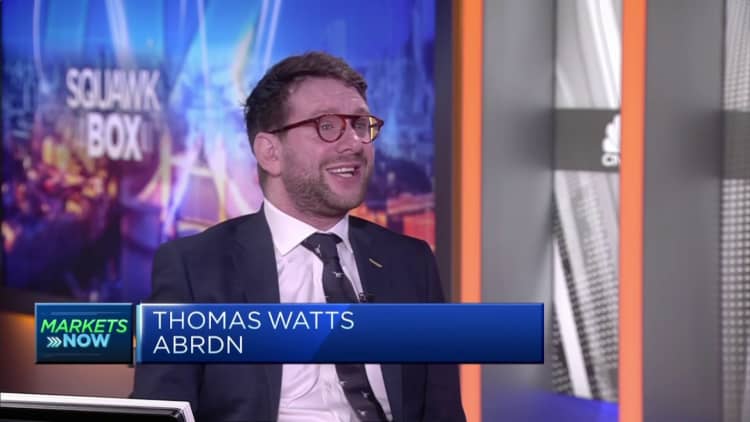London, UK – September 2021: People are seen eating outside in Soho, London in September 2021.
Sopa Images | LightRocket | getty images
LONDON – UK inflation fell more than expected to 3.9% in November, the lowest annual reading since September 2021.
Economists polled by Reuters had expected a modest 4.4% decline in the headline consumer price index, a surprise after October’s annual reading of 4.6% fell to a two-year low.
Month-on-month, headline CPI declined 0.2%, compared to the consensus forecast of a 0.1% rise.
The core CPI – which excludes volatile food, energy, alcohol and tobacco prices – came in at an annual 5.1%, well below the 5.6% forecast.
The surprisingly large decline fueled bets that the Bank of England will cut interest rates in 2024, which manifested in a sharp fall in British bond yields.
UK 10-year-old gilt The yield fell to an eight-month low, falling 11 basis points to about 3.54%. Yields move inversely to prices. Meanwhile, the UK FTSE 100 The only major European stock indexes in positive territory on Wednesday were up 0.8% by mid-morning trading.
The Office for National Statistics said the biggest contributions to the decline came from transport, entertainment and culture, and food and non-alcohol beverages.
The Bank of England maintained its accommodative stance last week and kept its key interest rate unchanged at 5.25%. The Monetary Policy Committee reiterated that policy “is likely to need to remain restrictive for an extended period.”

The central bank ended 14 consecutive interest rate hikes in September as policymakers tried to bring inflation back from a 41-year high of 11.1% to the bank’s 2% target in October 2022.
Britain’s Finance Minister Jeremy Hunt praised Wednesday’s data and said the country was “beginning to remove inflationary pressures from the economy.”
“This, along with the business tax cuts announced in the Autumn Statement, means we are back on the path to healthy, sustainable growth,” he said in a statement.
“But many households are still struggling with high prices so we will continue to prioritize measures that help ease cost-of-living pressures.”
Significant decline ‘weakens’ Bank of England caution
The Bank of England has repeatedly pushed back against market expectations of a significant cut in interest rates in 2024, noting last week that “key indicators of the persistence of inflation in the UK remain elevated.”
ICAEW economics director Suren Thiru said while the “shocking” fall in inflation recorded on Wednesday would reassure households that there is “light at the end of the tunnel”, the decline in core CPI data suggests underlying price pressures may be easing. Have been.
“Potential pressure on wages due to rising unemployment and a stagnant economy should help them move downwards,” he said in an email.

“These inflation figures suggest that the Bank of England is being too pessimistic in its rhetoric about when interest rates might start to fall. A deteriorating economy could prompt the Bank to start easing policy by the autumn, especially if inflation “The pressure should keep decreasing.”
A ‘glimpse of relief’
Richard Carter, head of fixed interest research at Quilter Cheviot, said the latest inflation print adds to a sense of “cautious optimism” in Britain relative to last year’s cost-of-living crisis and bond market chaos.
Despite the decline in CPI, he said the macroeconomic picture remains “complex, marred by stagnation and subdued growth prospects”.
The UK economy shrank 0.3% month-on-month in October, following a decline in the third quarter.
“This pause, leaving output no higher than it was in January, paints a picture of an economy struggling to recover from a series of unprecedented challenges,” Carter said over email, acknowledging that the pace at which inflation is slowing. That’s happening, a glimpse of relief for families.
“The pressures are manifold – from the cost-of-living crisis, volatile energy markets, Brexit shocks to enduring productivity issues. These factors have collectively weakened economic prospects and consumer confidence.”







